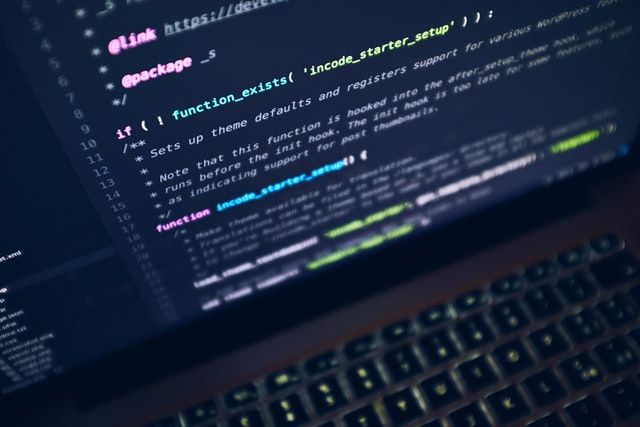Containerizing a MySQL based server and PHPMyAdmin

MySQL is an open-source Relational Database Management System (RDBMS) with a large user base. You can use several RDBMS to run SQL queries, such as MySQL, PostgreSQL, SQLite, SimpleDB, and Elasticsearch.
At times, it becomes hectic to set up an SQL server on your local computer. For example, let's say you are working on a Windows environment and running a MySQL database server. In this case, you have to download software like WAMP, MySQL workbench, and XAMPP to run SQL commands, access your databases and records.
While installing this software in your local system, there are chances of failure, like errors due to dependencies and libraries to support these programs. This makes it hard, especially for a beginner.
Let's say, you install a MySQL server to run SQL queries. Even then, it can be hard to specify which version of MySQL is required. Based on the requirement, you will have to download that specific version and reinstall it on your computer.
With docker, things get a little easier.
This time you need not install all dependencies to set up a MySQL server. Docker helps you to containerize these dependencies so you can run them as containers.
Docker will execute certain instructions for containerizing applications, set up a specific environment, and deliver fully packaged and containerized applications along with their dependencies and libraries. Here, we can specify the version of the MySQL server to be installed.
With Docker, you don't need to install and configure the MYSQL environment to access databases and records. Instead, it provides you with images (official software) that you use to run applications within your docker containers, such as PHPMyAdmin, Adminer, and Sequel Pro (for macOS).
When you need to execute SQL queries, you will only need to set up a docker yml file, run a few commands, and docker will set everything ready for you. Thus, as a beginner, you can run and use SQL queries in a containerized environment.
You can learn more about the concepts of Docker here.
In this tutorial, we will learn how to dockerize (create a docker image an application) a MySQL database server and set up PHPMyAdmin or Adminer to interact with the MySQL Database.
Whenever you are dockerizing an application, you first need to write a docker-compose file and specify the instances you want to containerize to form your stack.
Prerequisites
As a prerequisite, you'll have to download Docker depending on the OS you use.
Once you installed, make sure you run docker in your command line. If you have no errors, then you're good to go.
Pulling MySQL with docker
The first thing you have to do to create and test the database server in docker is to pull a MySQL image from the Docker hub with this simple command.
docker pull mysql:latest
docker pull will inform the Docker hub that you want to download this specified image to your local docker engine.
You can have a look at the MYSQL image in the Docker hub.
MySQL servers have different versions of the release, and each version is different and not compatible with the previous versions. So, you need to specify the version of MYSQL to be downloaded.
The best practice would be to download the latest stable MYSQL server version. That's why we are adding the latest flag to docker pull mysql. If you wish to download a specific version, then you have to specify something like docker pull mysql:8.

You can then run docker images to see a list of docker images you have pulled from the docker hub. And right there, we can see MySQL image is now available to our locally installed docker.

Create a MYSQL image container
Having the MySQL docker image ready, we can now create a container that will run this image.
To do so, we will run the following command:
docker run --name mysql_db -d -p 3306:3306 -e MYSQL_ROOT_PASSWORD=mypassword mysql:latest
docker runwill automatically run a created docker container.--name mysql_db- the flag--namewill instruct Docker to create a container namedmysql_db.-d- this optional flag stands for the detouch mode. When included, the MySQL database will run in the background as a docker demon.-p 3306:3306- this port number will map the MySQL server to its default port which is3306.-e MYSQL_ROOT_PASSWORD = mypassword- the flagestands for environment variables. In this case, we need a root password to access the MySQL server. We will assign the root password as an environment variable.mysql:latestspecifies the image that we want to include in this container. This image must be downloaded/pulled and made available in a local docker.
When you execute the command above, a container will be created along with a container ID. And if you run docker ps, you can see the created container assigned to name mysql_db.

Running the MySQL server from the container
Now, we are going to execute the MySQL server demons directly from the container we have created.
We will follow the below instructions:
docker execwill execute a docker command and point it directly to a specified docker container.-it-istand for interactive andtfor the terminal.mysql_dbspecifies the name of the container you want to execute./bin/bashspecifies the shell you want to use. You can even use thecmdor thePowerShell.
In this case, I've chosen to use git bash. So, make sure you have git bash installed in your computer for /bin/bash to work.
The summarized single command would be:
docker exec -it mysql_db /bin/bash

We can now connect to the MySQL server and start the interaction using the SQL command. We can use the password from the environment variable to access the server.
To log in to the server, we will need a username and a password. In this case, the username should be the default root and the password should be mypassword as shown below:
mysql -uroot -pmypassword
mysqlfor the MySQL server.-uroot- for the default root username.-pmypassword- for the set root password.
You can see we logged on to the MySQL server and ready to run SQL commands.

Let's execute a create database example here:
CREATE DATABASE my_test_db;

There you go! You can see Query Ok and the affected rows indicating the query has executed correctly. You can view the list of the available databases using:
SHOW databases;

As you can see, we have the my_test_db database created.
Now, you can start interacting with this database and execute MySQL queries inside it. Run use my_test_db to switch to the database and execute queries such as:
- To create a table:
CREATE TABLE users ( id int not null auto_increment, name varchar(225) not null, constraint pk_example primary key (id));
- To insert into this table:
INSERT INTO users ( id, name ) VALUES ( null, 'Alexa' );
- To select from this table:
SELECT * FROM users;

To execute these SQL queries from a dockerized MySQL server environment is straightforward .
In all of the examples above, we used a terminal to run these queries. This can be a bit hard for beginners.
We will learn how to set a PHPMyAdmin to help you interact with the server and execute queries without using a command line.
Using PHPMyAdmin
Method 1: Connect MySQL and PHPMyAdmin containers
We will create an additional phpmyadmin container, then link it with the previous mysql_db container.
- Pull PHPMyAdmin image from docker hub using this command:
docker pull phpmyadmin/phpmyadmin
Having the image ready, we can now create a container that will run this image and connect it to the mysql_db container.
To do so, we will follow the below instructions:
docker runwill automatically run a created docker container.--name phpmyadmin- the flag--namewill instruct docker to create a container namedphpmyadmin.-d- this optional flag stands for the detouch mode. When included, the MySQL database will run in the background as a docker demon.-p 8068:80- This port number will map the PHPMyAdmin and make it accessible over the browser.--link mysql_db:dbwill link thephpmyadmincontainer to themysql_db.phpmyadminspecifies the image that we want to include in this container. This image must be downloaded/pulled and made available in a local docker.
docker run --name phpmyadmin --link mysql_db:db -p 8068:80 -d phpmyadmin
Now, you can open the browser and access the PHPMyAdmin using http://localhost:8068/. This loads up the PHPMyAdmin page.
You can log in with the username as root and password as mypassword. Just as we defined when creating a mysql_db container.

Method 2: Spin MySQL and PHPMyAdmin using docker-compose
To do so, we will set a docker-compose.yml, set the MySQL server and PHPMyAdmin, and run both in a single container.
Let's go ahead and create a sample folder. You can use your preferred text editor like Visual Studio Code.
We will then create a docker file.
Note: Name this file as
Dockerfile.
Add these MySQL instructions into this file:
FROM MySQL:latest
ENV MYSQL_DATABASE: my_db
ENV MYSQL_USER: my_password
ENV MYSQL_PASSWORD: secret
ENV MYSQL_ROOT_PASSWORD: secret
EXPOSE 3307:3307
On the same directory, create a docker-compose.yml file.
Instead of using the docker command, we will use docker-compose to set up this container.
Go ahead and write the MySQL and PHPMyAdmin instructions as follows:
version: "3.8"
services:
mysql_db:
build:
context: .
dockerfile: Dockerfile
image: mysql:latest
container_name: mysql
restart: unless-stopped
phpmyadmin:
image: phpmyadmin/phpmyadmin
restart: unless-stopped
environment:
PMA_HOST: mysql_db
depends_on:
- mysql_db
ports:
- "8080:80"
On your terminal run, docker compose up -d.
This will download any additional libraries set in the docker-compose.yml file and the spin-up a MySQL server with PHPMyAdmin. The flag -d will run this stack in detouch mode, i.e., in the background.
Now, you can access your MySQL server using PHPMyAdmin by executing the localhost port 8080 on your browser, i.e., http://localhost:8080/. You can log in using the same credentials, as mentioned earlier.

And, there you go, you are ready to execute SQL queries more interactively.
As an alternative to PHPMyAdmin, Adminer can also be used. The best thing about Adminer is that it's easily compatible with a variety of relational databases such as MySQL, SimpleDB, SQLite, PostgreSQL, and Elasticsearch.
So, you could replace the following PHPMyAdmin service with the Adminer service.
adminer:
image: adminer:latest
restart: unless-stopped
ports:
- 8000:8080
depends_on:
- mysql_db
environment:
ADMINER_DEFAULT_SERVER: mysql_db

Provide username as root and password as secret, same as PHPMyAdmin.

Conclusion
We learned a simple way to install and run a relational database.
This method can be used for other relational databases such as PostgreSQL. In this case, you pull a PostgreSQL image and spin it together with the pgadmin4 image, and you will be able to run it as well in a container.
In this article, we have seen how to containerize and run MySQL servers using Docker. We have simplified the whole process of installation, configuration, and running the database.
To understand better, try them out by yourself.
Happy coding.
Peer Review Contributions by: Srishilesh P S













